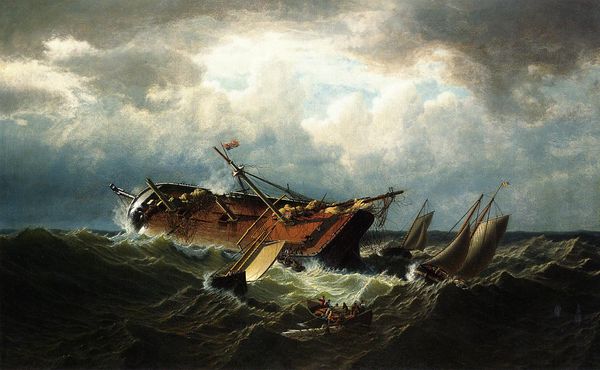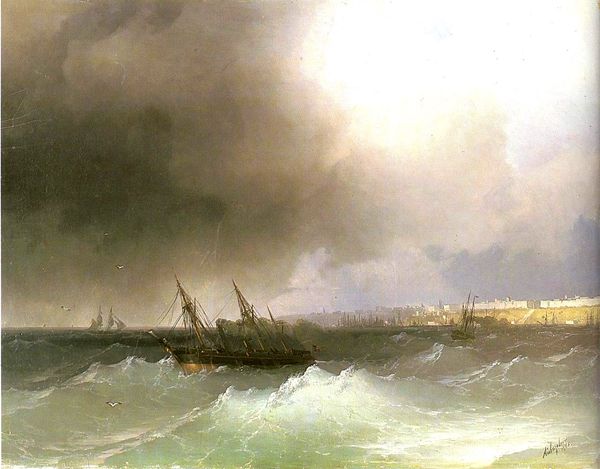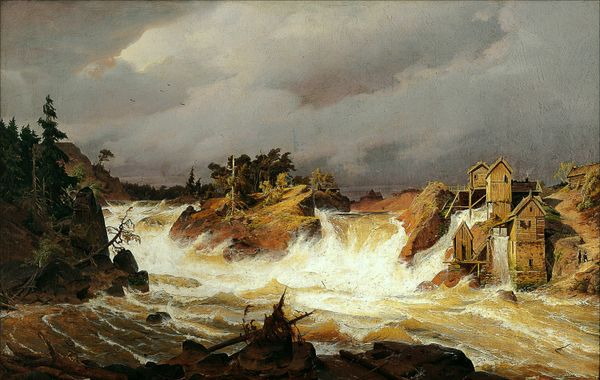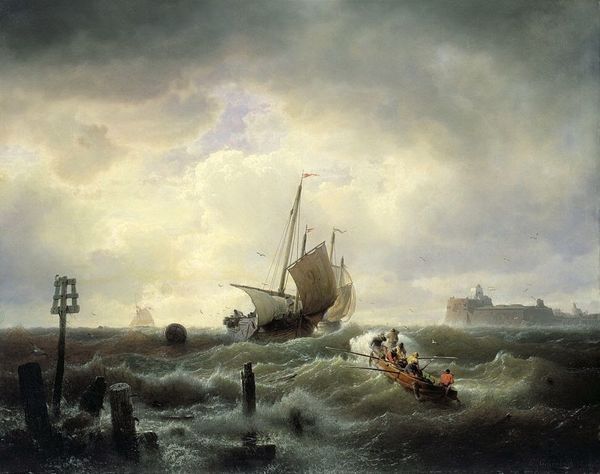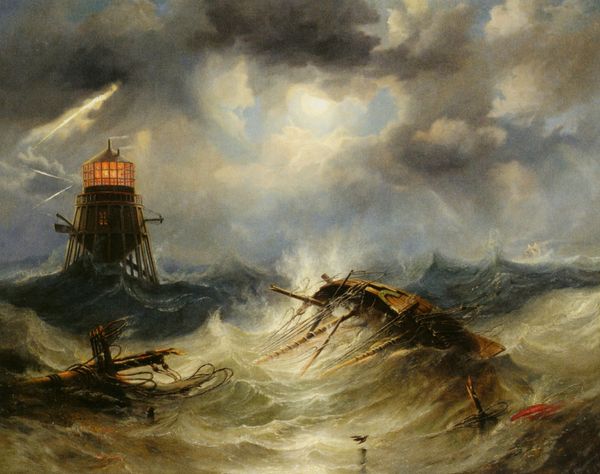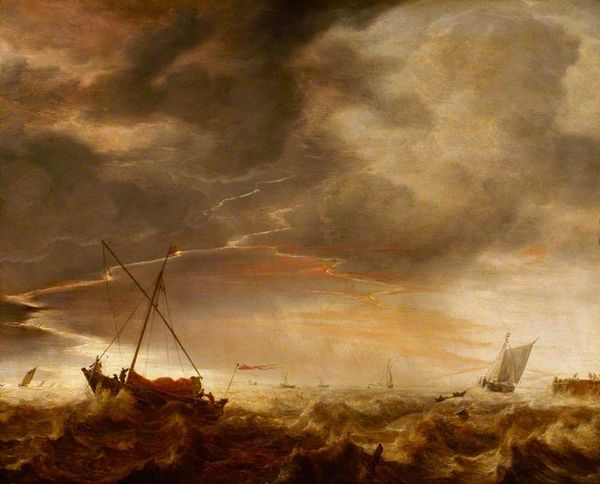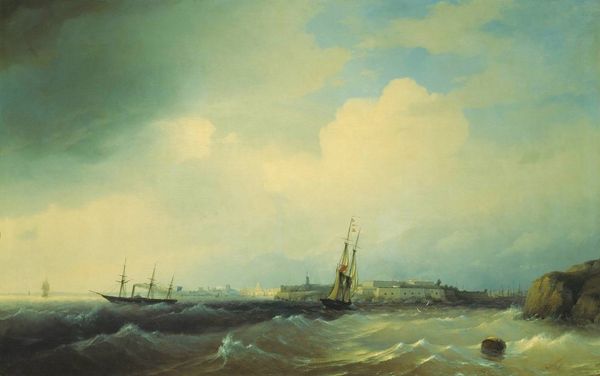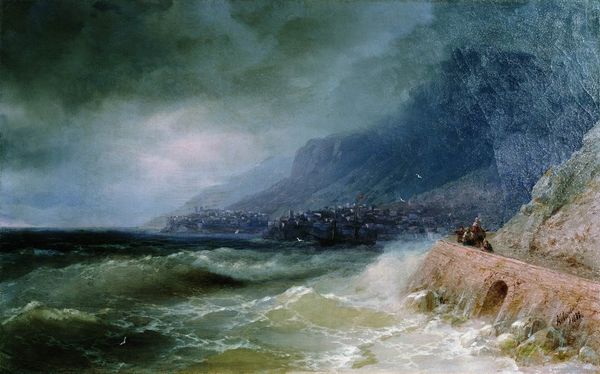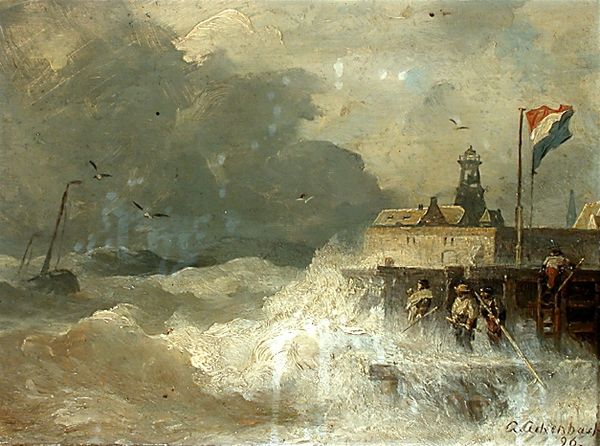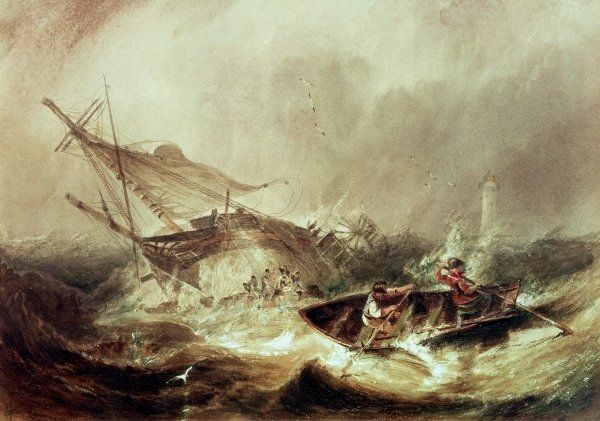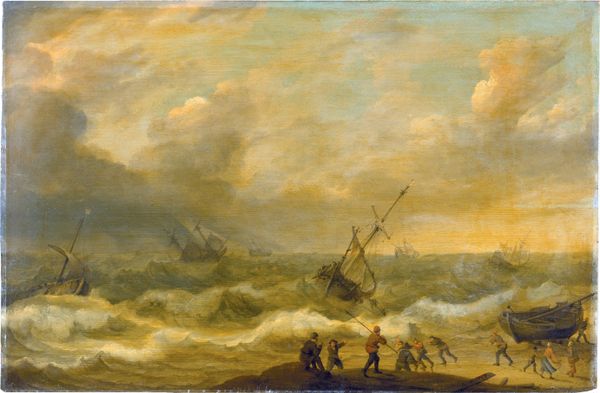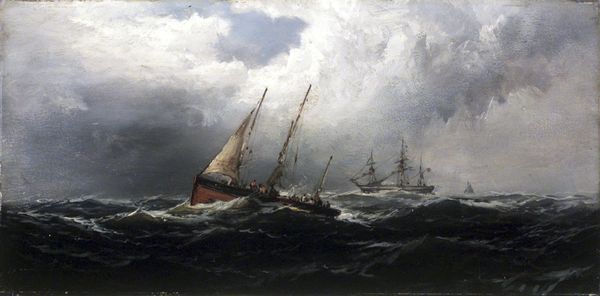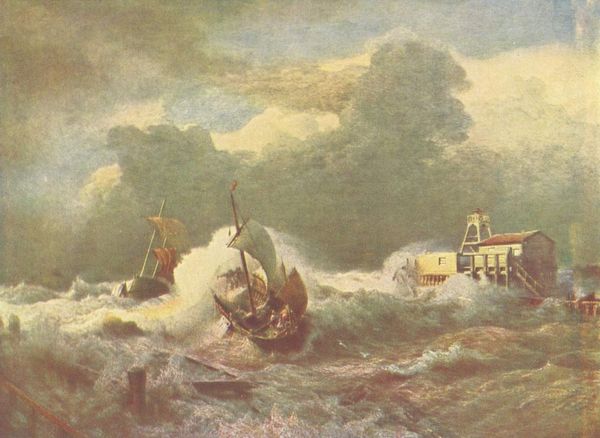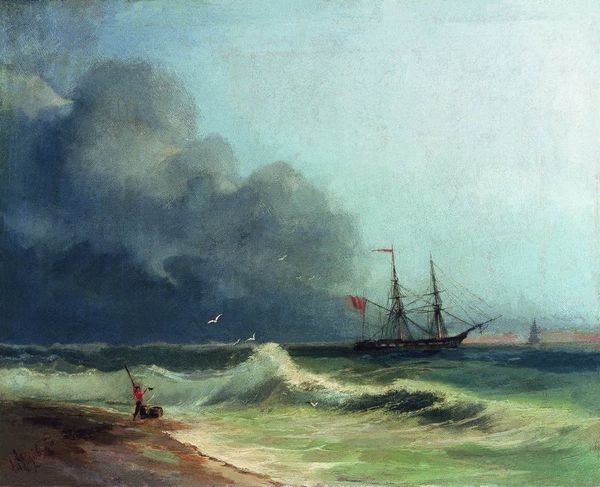
Copyright: Public domain
Editor: Andreas Achenbach's 1890 oil painting, "Departure Of A Steamship, Storm On The Dutch Coast," really captures a sense of dramatic movement. The way he renders the water and the ship practically fighting against each other is quite compelling. What do you make of this piece? Curator: For me, the immediate fascination lies in Achenbach's almost brutal honesty regarding industrial progress and nature’s raw power. Notice the steamship: its creation relies on massive material extraction, labor exploitation, and fossil fuel consumption. The "storm on the Dutch coast" then represents something of a payback for this process. It throws into sharp relief the unequal power dynamic between human industrial might and the earth itself. The materials – oil paint layered thickly – further enhance this sense of turmoil and impending instability. Does this emphasis on materials change your perception? Editor: That's a compelling perspective. I hadn't considered the material implications of the steamship in that light before. Seeing the materials as evidence of both industry and nature's response gives the painting a new layer of meaning. Curator: Precisely. The brushstrokes themselves are a record of Achenbach's physical engagement with the materials. Each application becomes a conscious decision, laden with ideological implications. How do we value human progress when its material cost involves inevitable destruction of our resources? Editor: I see. So by highlighting the materials and their historical context, the painting encourages us to question the true cost of "progress." Thanks for sharing that perspective. It definitely reframed my understanding. Curator: My pleasure. Looking at art through a materialist lens always offers rich insight, especially in understanding these nineteenth-century works depicting an age of rapid, often ruthless industrial expansion.
Comments
No comments
Be the first to comment and join the conversation on the ultimate creative platform.
